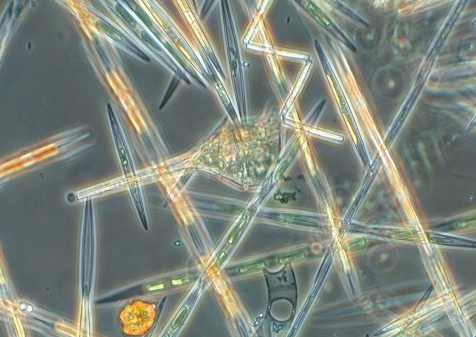Harmful algal blooms (HABs) occur when colonies of toxin-producing algae grow out of control. Along the California coast, some of those most severe blooms are caused by the algae Pseudo-nitzschia (pictured here), which produces a neurotoxin called domoic acid. This toxin accumulates in small fish, like sardines and anchovies, which are then eaten by marine mammals and humans, leading to neurological disorders and ultimately death if not treated.
SJSU/MLML research faculty member Dr. Iliana Ruiz-Cooley uses stable isotopes to study how domoic acid moves through marine food webs in Monterey Bay. This California Sea Grant-funded research will advance our understanding of HAB dynamics and improve both fisheries management strategies and marine mammal conservation efforts.
Read more about Dr. Ruiz-Cooley’s HAB research in the California Sea Grant story.


